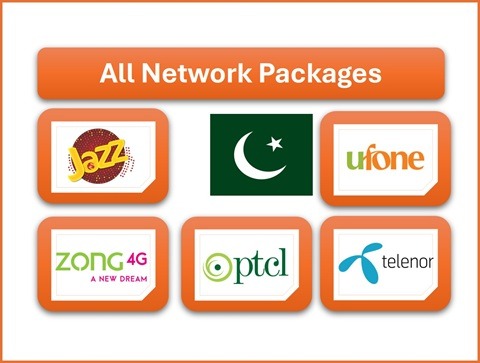
Story of Windows
Story of Windows: In the annals of technological innovation, few stories are as fascinating and impactful as the invention of Microsoft Windows. This tale is deeply intertwined with the lives of two iconic figures: Bill Gates and Steve Jobs. While Gates and Jobs are often seen as rivals, their paths crossed in ways that would shape the future of personal computing. This blog delves into the invention story of Windows, exploring the early days of Microsoft and Apple, the rivalry and collaboration between Gates and Jobs, and the lasting impact of their innovations on the tech industry.
1. The Genesis of Personal Computing
The 1970s was a transformative decade for technology, marking the transition from massive mainframes to personal computers. The vision of a computer in every home was still a distant dream, but the groundwork was being laid by young innovators who would soon become household names.
1.1. Early Influences
Both Steve Jobs and Bill Gates were inspired by the early advancements in computing. Gates, born in 1955, was a programming prodigy. His interest in computers began at a young age when he gained access to a General Electric (GE) computer at his prep school. By the time he was in high school, Gates had already developed a reputation as a brilliant coder.
Jobs, born the same year as Gates, had a different path. While Gates was deeply involved in programming, Jobs was more interested in the intersection of technology and the humanities. His exposure to electronics came from his adoptive father, who was a mechanic, and from spending time at Hewlett-Packard (HP) during his teenage years.
1.2. The Birth of Microsoft and Apple
In 1975, Gates, along with his childhood friend Paul Allen, founded Microsoft with the goal of developing software for the burgeoning personal computer market. Their first product was a version of the BASIC programming language for the Altair 8800, one of the first commercially successful personal computers.
Meanwhile, Jobs, along with Steve Wozniak and Ronald Wayne, founded Apple in 1976. Their first product, the Apple I, was a simple computer kit that gained modest success. However, it was the Apple II, released in 1977, that revolutionized the personal computing industry with its color graphics and user-friendly interface.
2. The Visionary and the Programmer: Jobs and Gates
The relationship between Steve Jobs and Bill Gates was complex, marked by both collaboration and rivalry. While their personalities and approaches to business were different, their visions for the future of computing were remarkably aligned.
2.1. Early Collaborations
Despite their later rivalry, Gates and Jobs initially collaborated in the late 1970s. Microsoft developed software for the Apple II, including versions of BASIC and other programs. This partnership was mutually beneficial, as Microsoft gained access to Apple’s growing user base, while Apple benefited from Microsoft’s software expertise.
However, as Apple began to develop its next major product, the Macintosh, the relationship between Jobs and Gates began to change. The Macintosh was designed to be a revolutionary product with a graphical user interface (GUI) that would make computers accessible to the masses. Jobs saw the GUI as the future of personal computing and was determined to make the Macintosh a success.
2.2. The Birth of Windows
While Jobs was focused on the Macintosh, Gates was working on his own vision for the future of computing. Gates recognized the potential of graphical user interfaces and knew that Microsoft needed to develop its own GUI-based operating system to stay competitive. In 1983, Microsoft announced the development of Windows, an operating system that would run on top of MS-DOS and provide a GUI similar to that of the Macintosh.
The announcement of Windows marked the beginning of the rivalry between Gates and Jobs. Jobs accused Gates of copying Apple’s ideas, and the two men engaged in a public feud that would last for years. However, Gates saw Windows as a necessary evolution of Microsoft’s software offerings, and he was determined to make it a success.
3. The Development and Launch of Windows 1.0
The journey from concept to reality for Windows 1.0 was fraught with challenges. Microsoft faced technical difficulties, delays, and criticism from both within the company and from external observers. However, Gates’s persistence and strategic vision would ultimately pay off.
3.1. Overcoming Technical Hurdles
Developing Windows 1.0 was a monumental task. The software needed to be compatible with a wide range of hardware, work seamlessly with MS-DOS, and provide a user-friendly interface. Microsoft’s engineers worked tirelessly to overcome these challenges, but the project was plagued by delays. Originally slated for release in 1983, Windows 1.0 didn’t hit the market until November 1985.
Despite the delays, Gates remained confident in the potential of Windows. He knew that graphical user interfaces were the future of computing, and he believed that Windows would eventually become the standard for personal computers.
3.2. The Reaction to Windows 1.0
When Windows 1.0 was finally released, it received mixed reviews. While the software introduced many innovative features, including overlapping windows, drop-down menus, and a multitasking environment, it was criticized for being slow and clunky. Many users preferred the more polished interface of the Macintosh, and Windows 1.0 struggled to gain traction in the market.
However, Gates was undeterred by the initial lukewarm reception. He knew that Windows needed time to mature, and he was willing to invest in its development to ensure its long-term success.
4. The Evolution of Windows: From 1.0 to 3.0
The development of Windows didn’t stop with version 1.0. Microsoft continued to refine and improve the operating system, releasing new versions that addressed the shortcomings of the original and introduced new features that would eventually make Windows the dominant platform in personal computing.
4.1. Windows 2.0: Gaining Momentum
Released in 1987, Windows 2.0 was a significant improvement over its predecessor. It featured better graphics, expanded memory, and improved multitasking capabilities. Perhaps most importantly, it introduced support for new applications like Excel and Word, which would become staples of the Microsoft Office suite.
Windows 2.0 also marked the beginning of Microsoft’s dominance in the software market. By bundling applications with the operating system, Microsoft was able to create a powerful ecosystem that attracted both users and developers.
4.2. Windows 3.0: The Breakthrough
The real breakthrough for Windows came with the release of Windows 3.0 in 1990. This version of the operating system was a game-changer, featuring a completely redesigned interface, enhanced graphics, and improved performance. Windows 3.0 was also the first version to achieve widespread commercial success, selling millions of copies and establishing Microsoft as the leader in the personal computing market.
The success of Windows 3.0 was a turning point for Microsoft. It validated Gates’s vision of a GUI-based operating system and set the stage for the company’s future dominance. It also intensified the rivalry between Gates and Jobs, as Windows 3.0 was seen as a direct competitor to the Macintosh.
5. The Epic Rivalry: Windows vs. Macintosh
The rivalry between Windows and Macintosh became one of the defining stories of the tech industry. It was a battle not just between two companies, but between two different visions of computing. While Apple focused on creating a closed, tightly integrated system, Microsoft pursued an open approach that allowed its software to run on a wide variety of hardware.
5.1. The GUI Wars
At the heart of the rivalry between Windows and Macintosh was the graphical user interface. Both Gates and Jobs recognized that the GUI was the future of personal computing, but they had different ideas about how it should be implemented. Jobs believed in creating a seamless, integrated experience where the hardware and software were designed together. Gates, on the other hand, believed in creating software that could run on a wide range of hardware, giving users more flexibility and choice.
The competition between Windows and Macintosh led to what became known as the “GUI wars.” Apple sued Microsoft, claiming that Windows infringed on the Macintosh’s interface design. The lawsuit dragged on for years, but in the end, Microsoft emerged victorious, allowing Windows to continue its rise in the market.
5.2. Market Strategies and Outcomes
Microsoft’s open approach to software development proved to be a winning strategy. By licensing Windows to a wide range of hardware manufacturers, Microsoft was able to achieve massive market penetration. Windows became the default operating system for the majority of personal computers, while the Macintosh remained a niche product.
Despite its smaller market share, the Macintosh continued to be influential, particularly in creative industries like graphic design, music production, and publishing. Jobs, who had been ousted from Apple in 1985, returned to the company in 1997 and led a renaissance that would culminate in the release of revolutionary products like the iMac, iPod, iPhone, and iPad.
6. Bill Gates, Steve Jobs, and the Legacy of Windows
The rivalry between Bill Gates and Steve Jobs was intense, but it was also incredibly productive. Both men pushed each other to innovate, leading to the creation of products and technologies that have shaped the modern world. The legacy of Windows is inextricably linked to this rivalry and to the broader story of personal computing.
6.1. The Impact of Windows on the Tech Industry
The success of Windows transformed Microsoft from a small software company into one of the most powerful and influential corporations in the world. Windows became the foundation of Microsoft’s dominance in the software industry, enabling the company to expand into other areas like office productivity, server software, and eventually cloud computing.
Windows also had a profound impact on the broader tech industry. By creating a standardized platform that could run on a wide range of hardware, Windows helped to democratize computing, making it accessible to millions of people around the world. The proliferation of Windows-based PCs drove the growth of the software industry, creating opportunities for countless developers and entrepreneurs.
6.2. The Influence of Steve Jobs and Apple
While Windows dominated the personal computing market, Steve Jobs and Apple took a different path. After returning to Apple in the late 1990s, Jobs led the company to create a series of groundbreaking products that redefined entire industries. The iMac brought design and simplicity to the forefront of computing, the iPod revolutionized the music industry, and the iPhone and iPad ushered in the era of mobile computing.
Jobs’s vision of creating beautifully designed, user-friendly products has had a lasting influence on the tech industry. Even though Windows continues to be the most widely used operating system, Apple’s emphasis on design and user experience has set new standards for the industry.
7. The Ongoing Evolution of Windows and Computing
The story of Windows doesn’t end with its initial success. Over the years, Microsoft has continued to evolve and adapt the operating system to meet the changing needs of users and to keep pace with technological advancements.
7.1. The Transition to Windows NT and Beyond
In the early 1990s, Microsoft began work on a new version of Windows that would be more robust and suitable for enterprise use. This led to the development of Windows NT, which was released in 1993. Windows NT introduced a new kernel architecture and was designed to be more stable and secure than previous versions of Windows.
The release of Windows 95 in 1995 marked another major milestone for Microsoft. Windows 95 combined the best features of Windows 3.1 and Windows NT, offering a user-friendly interface, improved multitasking, and support for 32-bit applications. The launch of Windows 95 was a cultural phenomenon, with millions of people lining up to purchase the software on the day of its release.
7.2. Windows in the 21st Century
As the 21st century began, Microsoft faced new challenges in the form of the internet, mobile computing, and competition from other tech giants like Google and Apple. Windows XP, released in 2001, became one of the most successful versions of the operating system, known for its stability and ease of use.
However, not all of Microsoft’s efforts were successful. Windows Vista, released in 2006, was widely criticized for its performance issues and complexity. Microsoft rebounded with the release of Windows 7 in 2009, which was praised for its speed, simplicity, and reliability.
The rise of smartphones and tablets in the 2010s forced Microsoft to rethink its approach to Windows. The release of Windows 8 in 2012 introduced a new touch-friendly interface, but it was met with mixed reviews. Microsoft responded by refining the interface and reintroducing the Start menu in Windows 10, released in 2015.
7.3. The Future of Windows
Today, Windows continues to be a dominant force in the tech industry, but its role is evolving. With the rise of cloud computing, Microsoft has shifted its focus towards integrating Windows with its Azure cloud platform. Windows 11, released in 2021, represents the latest step in this evolution, offering a modernized interface, improved performance, and deeper integration with Microsoft’s cloud services.
As we look to the future, it’s clear that Windows will continue to play a central role in personal computing, but it will do so in a world that is increasingly interconnected and driven by new technologies like artificial intelligence, augmented reality, and quantum computing.
8. Conclusion: The Enduring Legacy of Gates, Jobs, and Windows
The story of Windows is not just the story of an operating system; it’s the story of the people and ideas that shaped the modern world. Bill Gates and Steve Jobs were two of the most influential figures in the history of technology, and their rivalry drove them to create products that have had a lasting impact on society.
While Gates’s vision of an open, flexible computing platform made Windows the dominant operating system, Jobs’s focus on design and user experience redefined what technology could be. Together, they changed the world, and their legacies continue to influence the tech industry today.
The invention of Windows is a testament to the power of innovation, competition, and vision. It’s a story that reminds us of the importance of challenging the status quo, of pushing the boundaries of what’s possible, and of the impact that a single idea can have on the world.
As we continue to navigate the ever-changing landscape of technology, the lessons from the invention of Windows and the lives of Gates and Jobs remain as relevant as ever. Whether you’re a tech enthusiast, an entrepreneur, or simply someone who uses a computer every day, the story of Windows is a reminder that the future is shaped by those who dare to dream big and work relentlessly to make those dreams a reality.
You can also read the articles about Microsoft Windows 11, Microsoft Windows 10, Microsoft Windows 8, Microsoft Windows 7, Microsoft Windows XP
👉 Check out more articles on Microsoft Windows:
🔹 Windows 11 | 🔹 Windows 10 | 🔹 Windows 8 | 🔹 Windows 7 | 🔹 Windows XP









